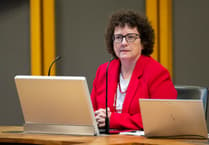Tens of thousands of people at the greatest risk of irreversible sight loss are languishing on waiting lists for too long, with services woefully under-resourced, a Senedd committee has heard.
The Senedd’s health committee took evidence from clinicians, charities and patients as part of a short inquiry into ophthalmology in Wales on 20 March.
More than 80,000 patient “pathways” – which include those waiting for multiple treatments – were waiting too long for sight-saving treatment in January, according to the latest data.
Russell George, who chairs the health committee, asked about prevention given half of all sight loss is avoidable with early detection and timely treatment.
Ansley Workman, director of the Royal National Institute of Blind People (RNIB) Cymru, welcomed a new national clinical strategy but warned of a lack of commitment.
“There’s no investment, there’s no timeline,” she said.
“And that timeline needs to be at pace and the reason for that is people are going blind in Wales now, so it is a matter of urgency.”
In its written evidence, RNIB Cymru voiced concerns about the lack of a significant investment and direction from ministers in Cardiff Bay.
The charity warned: “Without this, Wales’ eye care waiting lists will continue to rise as will the number of patients … needlessly losing their sight while waiting for NHS treatment.”
Ms Workman raised under-reporting of the scale of harm befalling patients in Wales, with “shockingly low” reports despite 80,000 patient pathways being over their clinical target.
Rhianon Reynolds, clinical lead for ophthalmology within the NHS Wales Executive, pointed to the development of the national strategy but warned of a lack of support to drive change.
The consultant ophthalmologist said: “We can put the blueprint in place but without investment … it’s going to be difficult to show significant change.”




